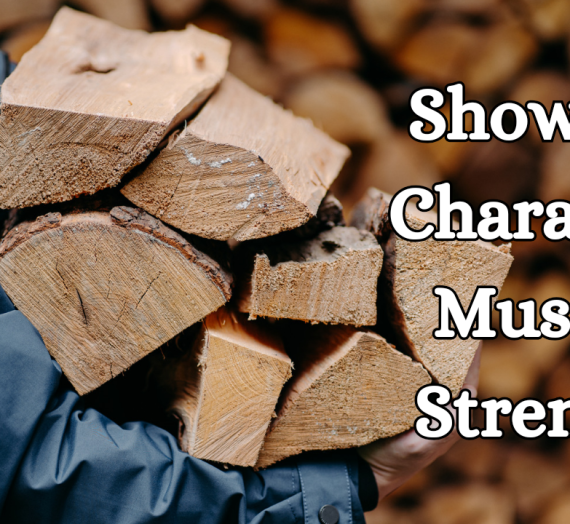How can your character repurpose wood ash in your story? What is the most important thing wood ash is used for in every culture? What about slugs? How could wood ash cause a house fire? Find out on this episode!
Welcome to Writing Rural with Alley, the fiction writer’s inspiration station for rural life and lifestyles, from historical to post-apocalyptic, helping you bring your rural stories to life! I’m Alley, and this is episode 52, 5 Wood Ash Uses (Part 2). Stick around to the end to find out all the ways things could go wrong. Now, let’s get into this.
Burning wood in a fireplace, wood stove, or outdoor furnace that uses wood are among the ways people warm their homes. Historically wood was the number one way people stayed warm. One thing that is always the same is that burning wood leaves behind ash, and your character will have to do something with it. Today, we will cover five more things they can use wood ash for.
6) Outhouse Deodorizer
One of the most popular uses for wood ash is as a deodorizer for the outhouse. While we all assume the pee and poo are what make an outhouse smell badly, the truth is that it is the type of bacteria that is breaking them down that makes the smells far worse in an outhouse. Some bacteria produce smells and others do not. You want to kill off the ones that make more smells and let the ones without more smells do their job. One way to do this is with wood ash.
A bucket of wood ash can be kept in the outhouse with some kind of scoop or cup. When someone uses the outhouse, especially for a number two, your character will simply take a scoop of the wood ash, sprinkle it into the hole, and onto their droppings. It is as simple as that, but fair warning, don’t let your character drop the scoop if they like it. It is unlikely anyone will be retrieving it.
7) Make Lye
Yes, you can make lye with wood ash. Lye being spelled L-Y-E. It’s not the same as telling a lie. Sorry, I had to add that in case my kids are listening. Making wood ash into lye is a super simple process and one that is illegal for me (where I live) to teach others to do because someone might make meth out of it. That said, a simple Google search or search on YouTube does what I can’t.
So, why add it to the list? Because it is important to historical, and post-apocalyptic stories with the things you can make from wood ash lye. The most important of these is soap. Soap is made from wood ash lye and animal fat, normally in the form of lard or tallow.
Another important thing people did with it was to tan hides. I’ll give you a sum up of how it works. Your character will take the hide fresh from the animal, I’ll say a deer, and do something called fleshing. Basically, there is a white color to the skin itself. Your character will scrap off everything that is not white on the inside of the hid. The fur stays for this moment. This can get messy. Afterward, the hide will be submerged and weighed down to stay that way in the wood ash lye water.
A few days later, when the fur is easy to pull from the hide, it is time to take it out and scrap the fur off. Your character will need to be careful as the lye water can chemically burn them. After the fur is gone, there is a grayish layer under it that will need to be removed in what is called graining. It can be tricky and take time, but once it starts, it is fairly easy from there. Then they flip it over and do the other side looking for anything they might have missed.
Next they need to rinse the lye out of the hide. This requires soaking the hide in a bucket of water until it is soft and flexible. This will take a few days, so make sure your character gets new water every day.
In this method, the next thing to do is to brine the hide. Basically, it is a saltwater soak. It will stay in the brine for two or three days. Then it will be rinsed thoroughly. After that, the water needs wrung out, and the hide needs to sit until it is no longer dripping water. Don’t let it fully dry.
Then, it needs to be oiled. The type of oil depends on the era and the people group. Most people buy tanning oil today, but the Cree used the boiled brains of the animal mixed with butter and soap. Then the hide needs to be dried. If your character wants soft hide, they will need to flex, stretch, and move it every ten to fifteen minutes until it is fully dry. Then they have a nice soft hide.
Hides can be used for many things: clothing, teepees, tools, string, and more.
8) wood ash fabric dye
Wood ash can be added to fabric dyes to make the colors more vibrant. This is most commonly done when the cloth is still in a fiber state, an example being yarn. It is typically used as an afterbath when the fiber is dyed.
Your character will remove all large pieces from the wood ash. Then they will add about one cup per one to two cups of water. Mix, and let sit for about two weeks. It is ready when the mixture is slimy between your character’s fingers. The mixture will need to be diluted with water. The amount can be adjusted to however the character likes.
Then, the cloth, fiber, yarn, or whatever they are using is placed into the mix. Some colors will only need dipped, and others can take up to 45 minutes to change color, depending on what your character wants. Your character will need to be careful when handling the ash water as it could potentially burn them before diluting, and delicate skins could still be burned even then. The solution will need to be rinsed out before drying.
9) wood ash cement
Wood ash cement is something you will mold, similar to how bricks are molded. While it is called cement, from what I understand, it is about half the strength of cement, but that is still very strong. Maybe just don’t let your character build a skyscraper with it.
Wood ash cement is made by first sifting the ash powder from the coals. The powder will then be placed in some kind of mixing container. the amount doesn’t matter as long as it fits. Add water to cover all the ash and mix well. Once that is done, the extra water is drained off. The ash and water left are molded into a tiny bricks about 2 inches by 2 inches. I know, super tiny.
Next, the little brick is placed in an oven or fire and heated until it is glowing orange. The color is important to ensure that it is chemically changed as it should be. Then it is placed in water to cool it as quickly as possible. Only enough water to get the job done is important. Then, the water and brick are mixed until the brick melts into the water.
Next, crushed pottery, sand, clay, or perhaps tiny gravel are added to the water brick mix. This should be damp but not have dry pockets. Then, it is reformed into a brick and left out to dry for roughly three days. It will be hard at that time and should no longer dissolve in water. This is the finished product.
While these would be great for many uses, it would also take time to make enough of these tiny bricks to do anything, and your character will have to burn enough wood to produce the ash to make them. Your character will have to weigh the need against all of this to see if it is worth it to him or her. If you would like to compare this with how to make bricks, you can check out episode 33, Historical Brickmaking, with my guest host, Elizabeth Jacobson, but after you finish this episode.
10) Smell absorber
Wood ash can be used as a smell absorber that works like backing soda. Many off-the-grid homesteaders and people in history, and I assume will in the apocalypse, use this for everything from a cup to make the refrigerator smell better, to using in the outhouse, and even as something to get the skunk smell off dogs that got a little too close.
To sum up why, wood ash, just like baking soda has a high alkaline composure. When it comes in contact with acidic odors, it neutralizes them.
Fun fact: There are ancient Babylonian clay cylinders from roughly 2800 BC with soap inside, and they are inscribed with a soap recipe of boiled fats and ash. This is still the main ingredient in modern-day lye soap.
What could possibly go wrong?
Before we get to the best part, if you enjoy this podcast, I hope you’ll take a minute to follow, rate, and review on your podcasting platform. And if you are listening on YouTube, subscribe and hit that like button. Don’t forget to share with a friend. Now for everyone’s favorite part!
Likely to go wrong: Your character adds wood ash into the outhouse hole to keep the smell down. While they are doing so, the scoop falls into the hole.
Likely to go wrong: Your character adds wood ash as a fertilizer in their garden but didn’t mix it into the soil. When the wind picks up, the wood ash is blown away in the wind.
Possible to go wrong: Your character is adding sand to their wood ash cement, and they add too much. This makes the bricks crumbly and completely unusable once they are fully dry.
Possible to go wrong: Your character places a cup of wood ash inside their refrigerator to get rid of bad smells. One day, they bump the cup, and the ashes spill all over the inside of the refrigerator.
Possible to go wrong: Your character chemically burns their hand on wood ash lye.
Unlikely to go wrong: Your character decides to make a fireplace with wood ash cement. They could spend years making enough two-inch by two-inch bricks to make a fireplace.
Unlikely to go wrong: Your character is making wood ash cement, and when they go to remove the brick from the fire, they accidentally drop it and severely burn themselves.
Unlikely to go wrong: Your character adds wood ash to the outhouse when they accidentally drop the whole bucket of ash, including the bucket, down the hole.
Improbable but still technically in the realm of possibilities: Your character is sprayed by a skunk and some of it gets into their nose without them realizing it. They could spend hours rubbing ash on their skin and hair, trying to get rid of the smell.
Improbable but still technically in the realm of possibilities: Your character is trying to make sure to get enough wood ash inside the outhouse hole. As they lean in to make sure everything is covered in ash, they slip and fall head-first into the outhouse hole.
Thanks for listening! You can find the show notes and helpful links to learn more on my website, alleyhart.com. That’s A-L-L-E-Y-H-A-R-T.com. Subscribe or follow for more episodes. Connect by dropping me a comment on my YouTube videos. A new episode comes out every Monday. Until then. Happy wordsmithing.
Helpful Links to Learn More:
Outhouse Deodorizer:
https://www.cottagetips.com/tips/cottage-outhouse-tips/
Make Lye:
https://nella-naturals.com/blogs/blog/what-is-lye
Wood Ash Fabric Dye:
https://youtu.be/fbaKy0ApAHE?si=0L0SGq9euyWofvcN
Wood Ash Bricks:
https://www.offgridweb.com/survival/primitive-technology-wood-ash-cement/




